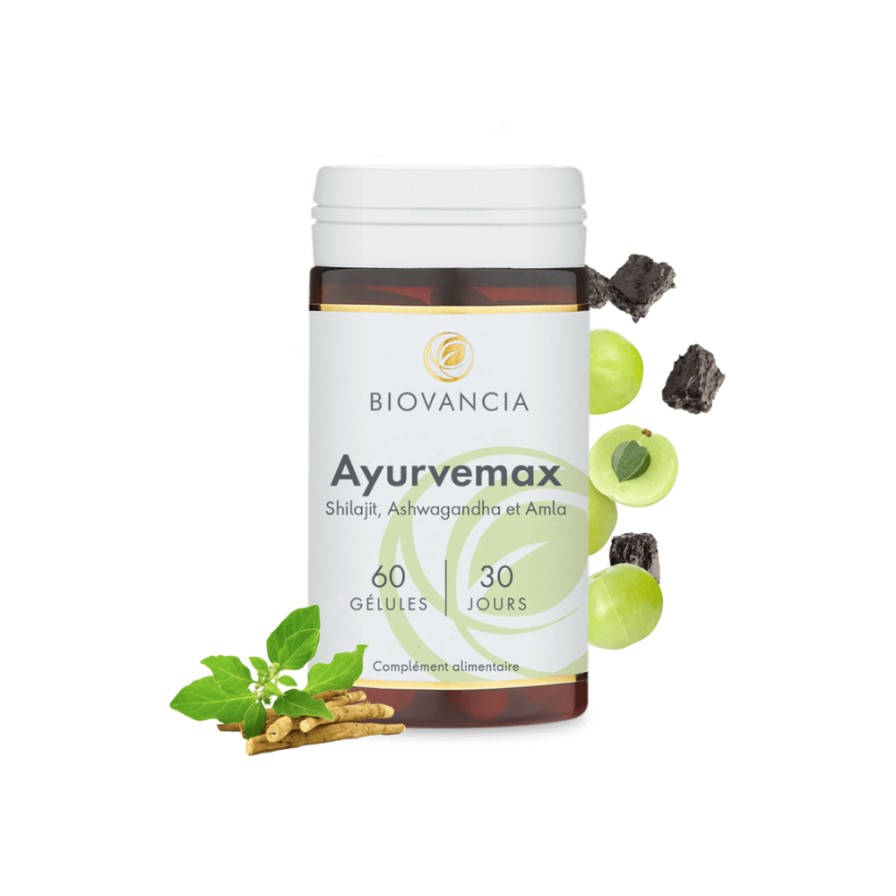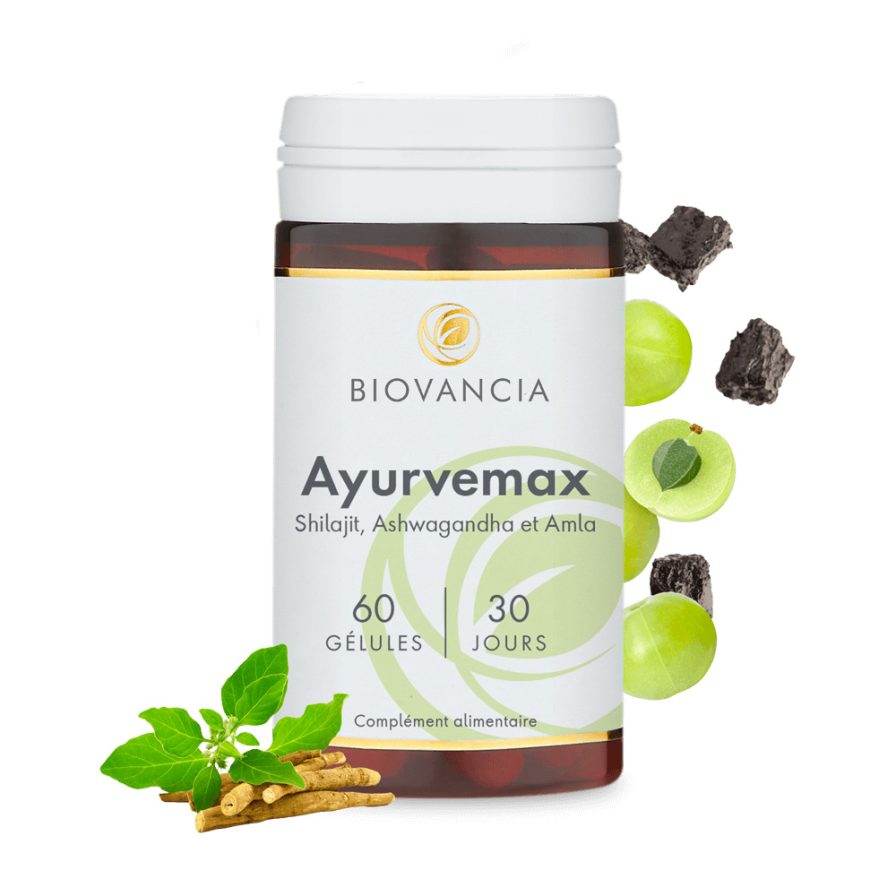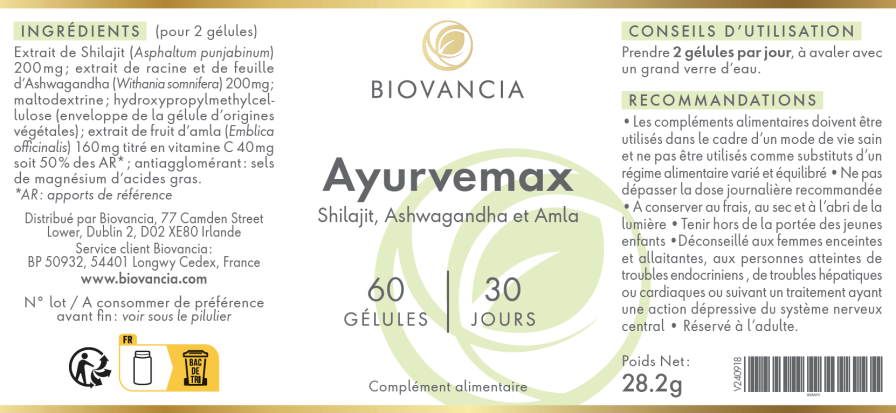choisissez votre offre
-



-



-

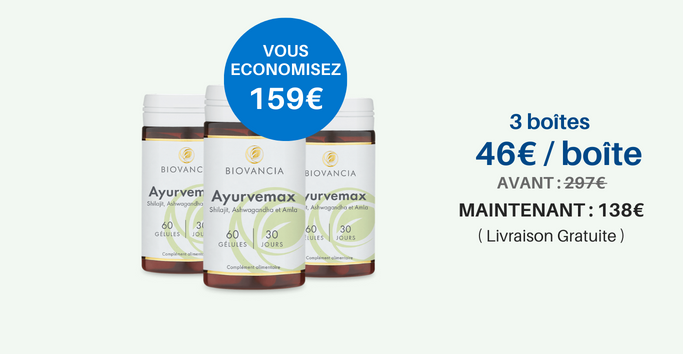
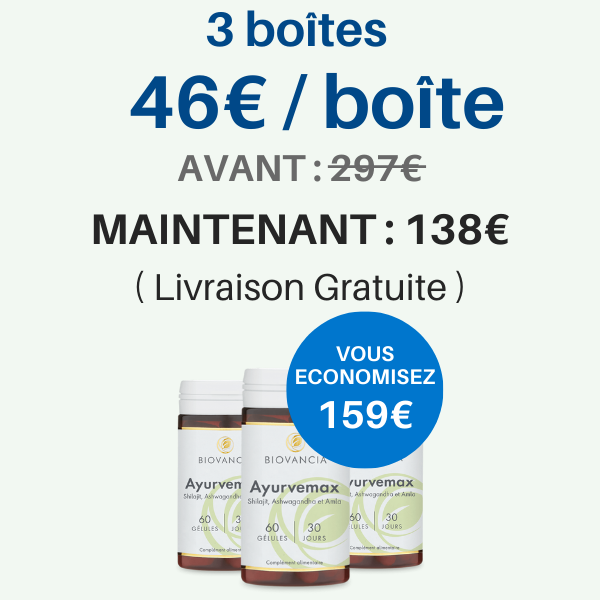
-


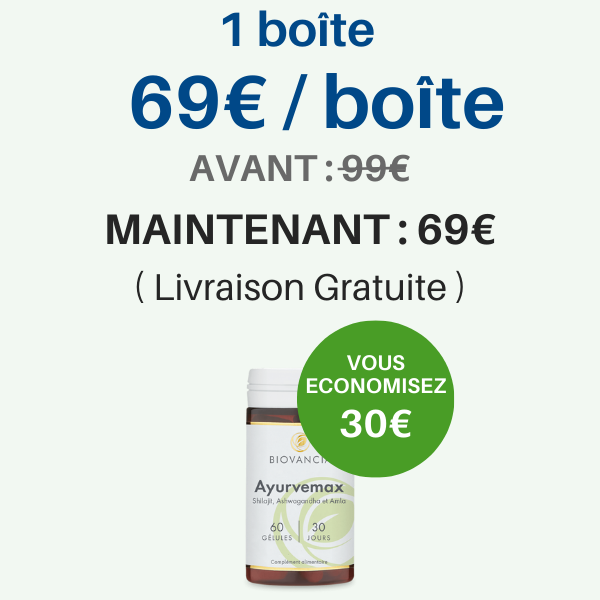
-
1 boite SANS abonnement : 99€ Cliquez ici
L’Ayurvéda est un système médical indien reconnu comme médecine traditionnelle par l’OMS (Organisation Mondiale de la Santé) et qui repose sur l’équilibre des énergies vitales du corps et de l’esprit.D’après les textes de l’ayurvéda, chaque individu possède dans son organisme et dans des proportions variables, les 5 éléments nécessaires à toute création physique dans l’Univers :
Éther (espace), Air, Eau, Feu et Terre
En s’associant entre eux, ces 5 éléments forment une combinaison unique de 3 doshas :
- Vâta (Air + Éther) qui représente le mouvement, la puissance motrice
- Pitta (Feu + Eau) qui caractérise la transformation, la force métabolique
- Kâpha (Eau + Terre) qui relie et soutient la structure de l’organisme
Ainsi, les 3 doshas sont à l’origine de nombreux processus physiologiques et psychologiques du corps et de l’esprit.
Selon la tradition, même si un dosha prédomine en chaque être humain, c’est le complet équilibre doshique d’une personne qui témoigne d’une bonne santé globale.
Cet équilibre réside notamment dans le choix d’une alimentation adaptée au profil ayurvédique de chacun.
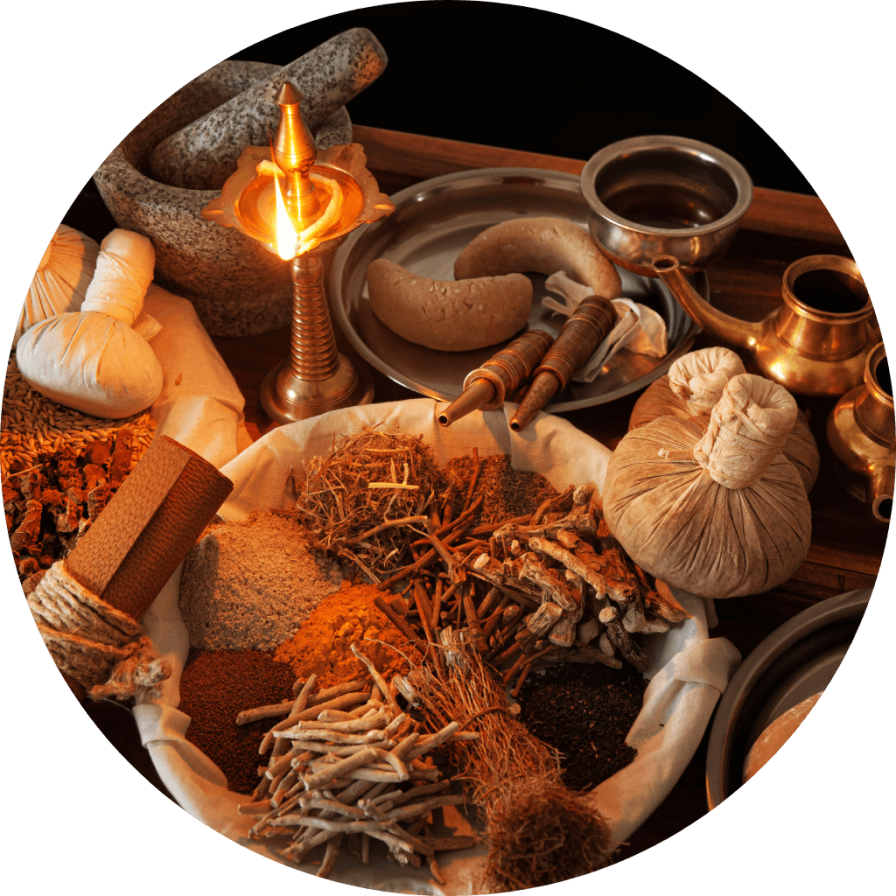
Ayurvemax réunit les 3 ingrédients essentiels à un bon équilibre doshique
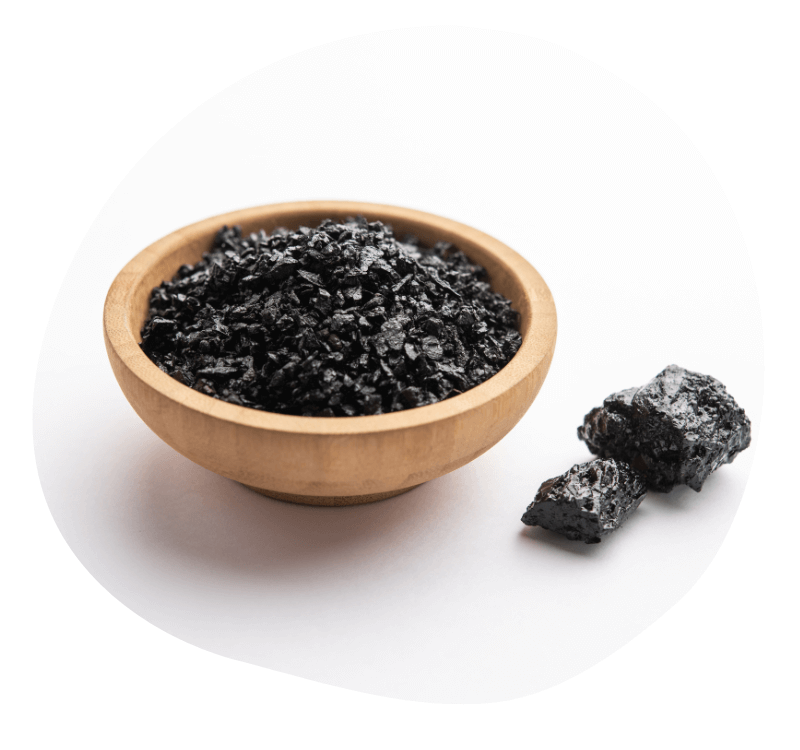
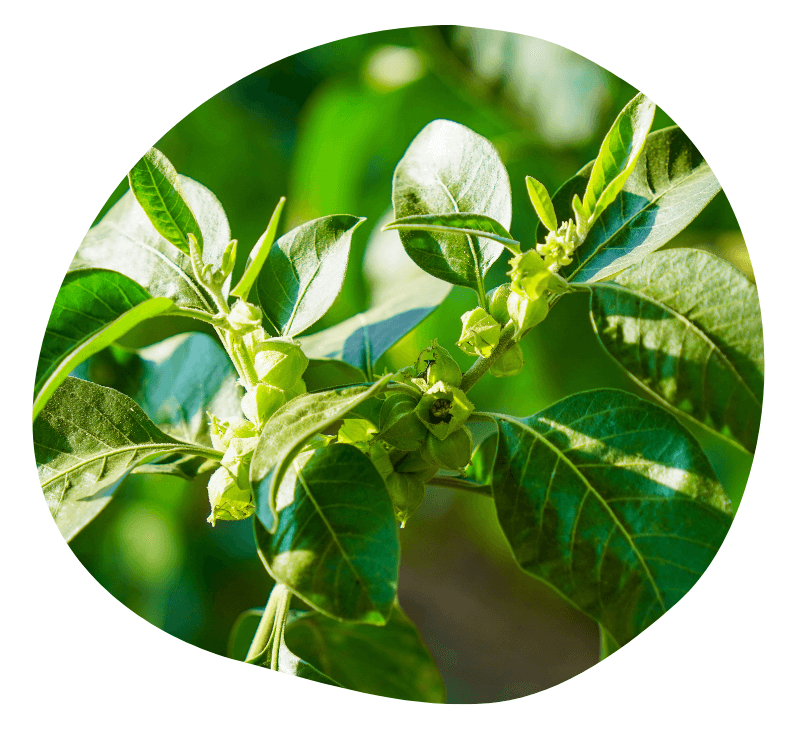

Sources :
(1). Pingali, U., & Nutalapati, C. (2022). Shilajit extract reduces oxidative stress, inflammation, and bone loss to dose-dependently preserve bone mineral density in postmenopausal women with osteopenia : a randomized, double-blind, placebo-controlled trial. Phytomedicine, 105, 154334. https://doi.org/10.1016/j.phymed.2022.154334
(2). Keller, J. L., Housh, T. J., Hill, E. C., Smith, C. M., Schmidt, R. J., & Johnson, G. O. (2019). The effects of shilajit supplementation on fatigue-induced decreases in muscular strength and serum hydroxyproline levels. Journal of the International Society of Sports Nutrition, 16(1). https://doi.org/10.1186/s12970-019-0270-2
Das, A., Datta, S., Rhea, B., Sinha, M., Veeraragavan, M., Gordillo, G. M., & Roy, S. (2016). The human skeletal muscle transcriptome in response to oral shilajit supplementation. Journal of Medicinal Food, 19(7), 701709. https://doi.org/10.1089/jmf.2016.0010
(3). Cagno, V., Donalisio, M., Civra, A., Cagliero, C., Rubiolo, P., & Lembo, D. (2015). In vitro evaluation of the antiviral properties of Shilajit and investigation of its mechanisms of action. Journal of Ethnopharmacology, 166, 129134. https://doi.org/10.1016/j.jep.2015.03.019
(4). Pingali, U., & Nutalapati, C. (2022b). Shilajit extract reduces oxidative stress, inflammation, and bone loss to dose-dependently preserve bone mineral density in postmenopausal women with osteopenia : a randomized, double-blind, placebo-controlled trial. Phytomedicine, 105, 154334. https://doi.org/10.1016/j.phymed.2022.154334
(5). Carrasco-Gallardo, C., Guzmán, L., & Maccioni, R. B. (2012). Shilajit : a natural phytocomplex with potential procognitive activity. International Journal of Alzheimer’s Disease, 2012, 14. https://doi.org/10.1155/2012/674142
(6). Ghezelbash, B., Shahrokhi, N., Khaksari, M., Pakdel, F. G., & Asadikaram, G. (2020). Hepatoprotective effects of shilajit on high fat-diet induced non-alcoholic fatty liver disease (NAFLD) in rats. Hormone Molecular Biology and Clinical Investigation, 41(1). https://doi.org/10.1515/hmbci-2019-0040
Ghasemkhani, N., Tabrizi, A., Namazi, F., & Nazifi, S. (2021). Treatment effects of shilajit on aspirin‐induced gastric lesions in rats. Physiological Reports, 9(7). https://doi.org/10.14814/phy2.14822
(7). [The treatment of benign prostatic hyperplasia using the Mumie-Vitas preparation]. (1997, 1 décembre). PubMed. https://pubmed.ncbi.nlm.nih.gov/9589956/
Pandit, S., Biswas, S., Uhlinova, J., De, R., Mukhopadhyay, S. C., & Biswas, T. K. (2015). Clinical evaluation of purified shilajit on testosterone levels in healthy volunteers. Andrologia, 48(5), 570575. https://doi.org/10.1111/and.12482
Kloskowski, T., Szeliski, K., Krzeszowiak, K., Fekner, Z., Kazimierski, Ł., Jundziłł, A., & Drewa, T. (2021). Mumio (Shilajit) as a potential chemotherapeutic for the urinary bladder cancer treatment. Scientific Reports, 11(1). https://doi.org/10.1038/s41598-021-01996-8
(8). alve, J., Pate, S., Debnath, K., & Langade, D. (2019). Adaptogenic and anxiolytic effects of ashwagandha root extract in healthy adults : a double-blind, randomized, placebo-controlled clinical study. Cureus. https://doi.org/10.7759/cureus.6466
(9). Speers, A., Cabey, K. A., Soumyanath, A., & Wright, K. M. (2021). Effects of Withania somnifera (Ashwagandha) on stress and the stress- related neuropsychiatric disorders anxiety, depression, and insomnia. Current Neuropharmacology, 19(9), 14681495. https://doi.org/10.2174/1570159×19666210712151556
Choudhary, D., Bhattacharyya, S., & Bose, S. (2017). Efficacy and safety of ashwagandha (Withania somnifera (L.) dunal) root extract in improving memory and cognitive functions. Journal of Dietary Supplements, 14(6), 599612. https://doi.org/10.1080/19390211.2017.1284970
Wankhede, S., Langade, D., Joshi, K., Sinha, S. R., & Bhattacharyya, S. (2015). Examining the effect of Withania somnifera supplementation on muscle strength and recovery : a randomized controlled trial. Journal of the International Society of Sports Nutrition, 12(1). https://doi.org/10.1186/s12970-015-0104-9
Singh, N., Bhalla, M., De Jager, P., & Gîlcă, M. (2011). An overview on Ashwagandha : A rasayana (Rejuvenator) of Ayurveda. African Journal of Traditional, Complementary and Alternative Medicines, 8(5S). https://doi.org/10.4314/ajtcam.v8i5s.9
(10). https://apps.worldagroforestry.org/downloads/Publications/PDFS/BC07317.pdf – page 180.
(11). https://eur-lex.europa.eu/LexUriServ/LexUriServ.do?uri=OJ:L:2012:136:0001:0040:FR:PDF – pages 33 à 36.
Ayurvemax, une formule
inspirée de l’ayurvéda pour un
meilleur équilibre doshique
